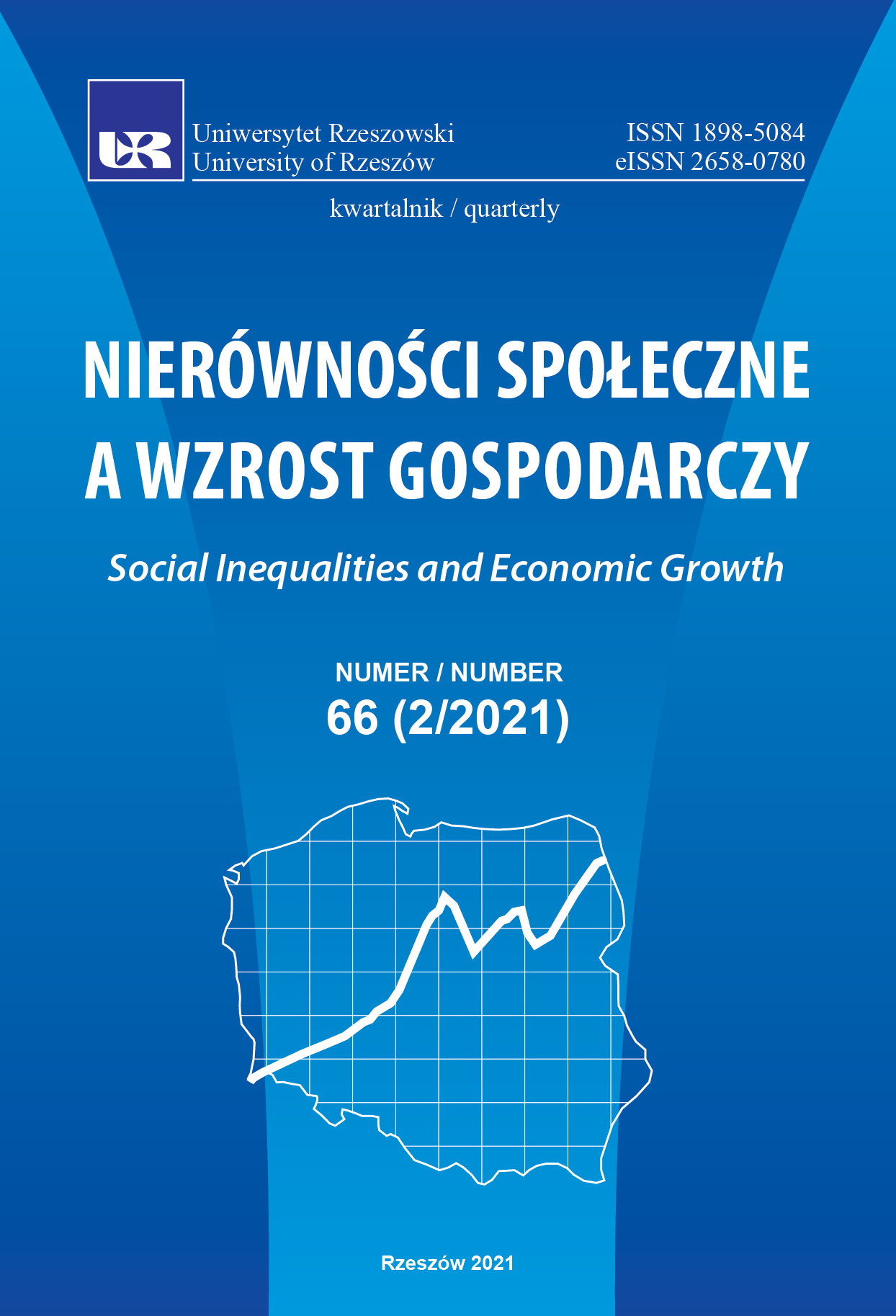Changes in consumer behavior in the field of cash and non-cash transactions
DOI:
https://doi.org/10.15584/nsawg.2021.2.8Keywords:
ATMs, payment cards, trend, seasonalityAbstract
Contemporary changes involving the computerization of everyday life affect its every sphere. This is especially true of the financial world. Until recently, the basic form of payments were of cash, whereas currently they constitute only a small part of all in trade. Even in everyday shopping, payment cards are already widely used, and traditional money is systematically being replaced by non-cash money. Taking these observations into account, the aim of the study was to identify the pace of changes in consumer attitudes in the use of selected services offered by the banking sector, i.e. the use of ATMs and the use of payment cards. The work was based on quarterly data for the period 2005 Q1 – 2020 Q1 provided by the National Bank of Poland. The analyses examined the rate of changes and their seasonal distribution.
The analyzed data show that society uses fewer and fewer cash withdrawals from ATMs, although larger amounts are withdrawn. The fact that ATMs are used less frequently reduces their number. However, the non-cash payments market is constantly developing. This form is characterized by the highest growth dynamics. There are also changes in seasonal behavior. Today, more transactions are made in the second and third quarters. Quite unexpectedly, it was observed that the number of transactions in the fourth quarters was lower than the number of transactions in the second and third quarters. However, the fewest transactions are invariably carried out in the first quarters. Depending on the instrument, the differences amount to two to ten percentage points. In general, research shows that in a stable market, trust in non-cash money grows at the expense of cash. Only a crisis situation – in 2020 it was the declaration of a pandemic – there is a slightly increased interest in cash.
Downloads
References
Dobrowolski, Z. (2010). Koncepcja społeczeństwa informacyjnego Daniela Bella. Warszawa: Instytut Informacji Naukowych i Studiów Bibliologicznych UW.
Elliott, A., Castells, M. (2011). Społeczeństwo sieci. W: A. Elliott A. (red.), Współczesna teoria społeczna. Wprowadzenie (s. 311–319). Warszawa: PWN.
Findley, D., Monsell, B., Bell, W., Otto, M., Chen, M. (1998). New Capabilities and Methods of the X-12-ARIMA Seasonal Adjustment Program. U.S. Bureau of the Census.
Fischer, B. (1995). Decomposition of Time Series Comparing Different Methods in Theory and Practice. EUROSTAT.
Hamulczuk, M. (2011). Prognozowanie cen surowców rolnych z wykorzystaniem modeli szeregów czasowych. Warszawa: Instytut Ekonomiki Rolnictwa i Gospodarki Żywnościowej, Państwowy Instytut Badawczy.
Luterek, M. (2004). Zmiany w strukturze społecznej i modelu życia jednostki od społeczności opartych na łowiectwie i zbieractwie do społeczeństwa informacyjnego. Warszawa: Instytut Informacji Naukowej i Studiów Bibliologicznych, Uniwersytet Warszawski.
NBP. Dane i opracowania dotyczące sytemu płatniczego. Pobrane z: https://www.nbp.pl/ home.aspx?f=/systemplatniczy/karty_platnicze.html (2020.03.04).
Nielsen, R. K. (2017). Where do people get their news? Oxford: Oxford University.
Nowak, J. S. (2008). Społeczeństwo informacyjne – geneza i definicje. W: P. Sienkiewicz, J. S. Nowak (red.), Społeczeństwo informacyjne. Krok naprzód, dwa kroki wstecz (s. 25–48). Katowice: Polskie Towarzystwo Informatyczne – Oddział Górnośląski.
Pyka, A., Sieradz, A. (2015). Bank detaliczny ery „Digital”. W: A. Kawiński, A. Sieradz (red.), Wyzwania informatyki bankowej (s. 21–24). Gdańsk: EKF.
Quenneville, B., Fortier, S., Chenzad, Z., Latendresse, E. (2006). Recent Developments in Benchmarking to Annual Totals in X-12-ARIMA and Statistics Canada. Seasonal Adjustment and Their Implications for Short-Term Analysis and Forecasting, 10–12 May.
Raport. (2019). Krótka opowieść o społeczeństwie 5.0, czyli jak żyć i funkcjonować w dobie gospodarki 4.0 i sieci 5G. Warszawa: Fundacja Digital Poland, KIGEiT.
Schwab, K. (2015). The Fourth Industrial Revolution. What It Means and How to Respond. Foreign Affairs. Pobrane z: https://www.foreignaffairs.com/articles/2015-12-12/fourth-industrial-revolution (2020.03.04).
Szpunar, M. (2018). Koncepcja bańki filtrującej a hipernarcyzm nowych mediów. Zeszyty Prasoznawcze. Tom 61, 2(234), 191–200. DOI: 10.4467/22996362PZ.18.013.9108.
Xu, M., David, J. M., Kim, S. H. (2018). The Fourth Industrial Revolution: Opportunities and Challenges. International Journal of Financial Research, 9(2), 90–91. DOI: 10.5430/ijfr.v9n2p90.
Downloads
Published
How to Cite
Issue
Section
License

This work is licensed under a Creative Commons Attribution-ShareAlike 4.0 International License.


